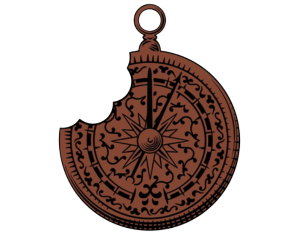Chocolate in the Bank
Chocolate is so much more than a delicious, melt-in-your-mouth indulgence. It is as rich in history as it is in flavor and mouthfeel. Most modern historians and scientists agree that cacao (the seed or bean from which chocolate is made) first grew in South America with distinct genotypes that can be traced to Peru, Ecuador and Venezuela. However, chocolate’s real culinary history began later, around 2000 B.C., far from the Upper Amazon, in tropical Mesoamerica.
At first cacao was enjoyed as a fruit and prized for its delectable white pulp, but eventually the Mesoamericans worked with the bitter but fatty beans nestled inside the pulp in much the same way that they prepared other common foods in their environment such as corn, chiles and pumpkin seeds. They sun dried the beans (which resulted in a certain measure of fermentation and reduction in acidity), roasted them on clay griddles, and ground them on stone slabs called metates. Their process transformed rough beans into a beautiful, aromatic chocolate paste that could be shaped into small cakes or balls and dried for future use. Sometimes the chocolate paste was combined with vanilla, herbs, flower petals, honey or chiles to create ambrosial drinks that continue to be savored to this day in Mexico and Latin America.
Deforestation in South America, cacao’s ancestral home, threatens to destroy the diversity of this magnificent and complex plant. Scientists, particularly those who hold chocolate near and dear to their hearts, have long been concerned over the genetic erosion of cacao, and fortunately the plant is designated as a priority crop for conservation.
Germplasm banks were created to conserve biodiversity, conduct research, and breed cacao. These banks are like chocolate rescue centers...safe havens that function as a cross between labs and botanical gardens. Most cacao-producing countries have their own small germplasm banks, but there are only two in the world that possess extensive collections. The bank with the greatest number of “deposits” (around 3,000 specimens) is in Trinidad and the other is in Costa Rica.
Often, the primary concerns at cacao germplasm banks are productivity and disease resistance. However, as a result of studying cacao genetics, scientists now have a comprehensive database that can be used to properly identify countless varietals, some of which are the finest cacaos in the world - the kind that the makers I admire wisely transform from precious beans to sumptuous bars. Thanks to these germplasm banks, our skilled small-batch craft chocolate makers can now accurately match tree cuttings and beans with true genetic fingerprints. When they make bean selections they can be sure that they are investing in genuine treasures of noble ancestry that will delight taste buds with a panoply of flavors, culminating in a pure and intense chocolate finish. The featured makers at Barometer Chocolate never resort to charmless bulk beans, which comprise around 95% of the chocolate bars lining the shelves of markets and many specialty shops.
Next week I will be adding some beautiful, new “deposits” into the Barometer Chocolate collection. If a limited edition silky pistachio gianduja bar makes your mouth water, or a luscious, profoundly chocolatey mini bar from rare and exquisite Venezuelan Chuao beans strikes your fancy (both bars are dairy and soy-free), just say the word. I’m happy to make a withdrawal for you from my personal chocolate vault whenever you wish to indulge in true chocolate finery.
0 comments


